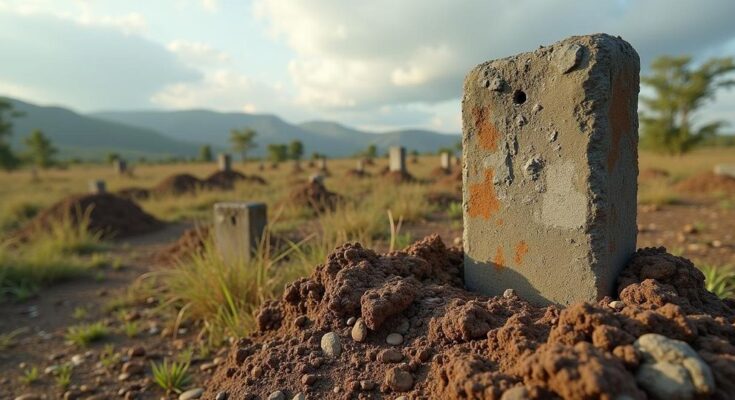Colombia and Angola are both grappling with the persistent threat of landmines, remnants of their lengthy conflicts. While Colombia has made strides in de-mining, thousands of landmines remain and continue to hinder agricultural and economic development. Angola is similarly affected, with vast contaminated areas creating perilous living conditions. Both nations depend heavily on international aid for their de-mining efforts, which have faced setbacks due to funding shortages. Stricter global arms regulations are essential to prevent further human tragedies related to landmine use.
In Colombia, the sound of landmine detonations resonates deeply, especially within the consciousness of the citizens of Bogotá. While the capital is distanced from the once volatile conflict regions, the threat posed by landmines is an indelible mark of the country’s prolonged internal strife, which has endured for over six decades, with various guerrilla factions, notably the Revolutionary Armed Forces of Colombia (FARC), involved. The rural expanse of Colombia has been acutely affected, witnessing the indiscriminate laying of thousands of landmines throughout communities, agricultural lands, and forests amidst the decades-long conflict. These explosives were often placed without accurate maps or documentation, thereby transforming extensive areas into hazardous terrains. Despite progress in de-mining efforts supported by the Colombian government and international bodies, the toll of conflict persists in the form of casualties and severe injuries. International initiatives such as the Ottawa Treaty, which sought to abolish the deployment of anti-personnel landmines, have yet to fully alleviate the crisis, as Colombia stands alongside numerous nations still grappling with the repercussions of landmine contamination. Conversely, Angola is recognized as one of the most landmine-polluted nations worldwide, with over 73 million square meters of hazardous land and more than 1,100 confirmed or suspected minefields. Similar to Colombia, Angola’s de-mining endeavors have faced substantial delays, primarily due to inadequate funding and the monumental scope of the issue. Both nations face not only humanitarian threats but also ramifications concerning economic progression. In Angola, remnants of landmines from the war for independence from Portugal, followed by the civil war, continue to jeopardize livelihoods and agricultural viability. Likewise, Colombia’s landmine crisis has severely curtailed rural advancement, thwarting families’ abilities to safely return to their properties or cultivate their crops. De-mining undertakings are inherently protracted and costly; thus, both countries depend significantly on international assistance and donor contributions. An absence of ongoing global commitment threatens the aspiration of achieving a landmine-free environment. In Angola, the reduction of international financing for de-mining dropped precipitously by over 80% from 2005 to 2017, aggravating internal fiscal challenges stemming from declining prices of critical export commodities. The government of Angola initially projected completing de-mining operations by December 2013 in compliance with the Ottawa Treaty; however, this timeline has since been postponed to 2028, a reflection of the significant challenges that lie ahead. Such scenarios parallel Colombia’s own battle to eradicate landmines, emphasizing the necessity for sustained international support in reaching de-mining objectives. The inadequacies of arms regulation in averting human calamity highlight an urgent need for more stringent rules and global collaboration. Without reinforced oversight regarding arms trading, the enduring effects of such weaponry will continue to imperil lives for generations to come.
The issue of landmines in Colombia and Angola is deeply rooted in the histories of both nations, marked by protracted conflicts that left devastating legacies in the form of unexploded ordnance. Colombia has grappled with internal warfare for over sixty years, which involved numerous guerrilla factions. Landmines were predominantly utilized in rural areas without proper documentation, resulting in hazardous living conditions and hindering economic development. Angola, which experienced a prolonged conflict for independence and a brutal civil war, faces similar challenges, with vast areas rendered unsafe due to the presence of landmines. Both nations struggle with restoring peace and normalcy, heavily relying on international assistance to address the extensive impact of landmine contamination on their populations and economies.
In conclusion, the legacies of landmines in Colombia and Angola illustrate the profound humanitarian and economic impacts of armed conflict. The extensive de-mining challenges in both countries highlight an urgent need for international collaboration and support to eliminate these hazards. The continuation of human tragedy underscores the necessity of stricter arms control regulations to prevent future conflicts from inflicting similar consequences on civilian populations. Without consistent global engagement, the objective of achieving a landmine-free status in both nations remains a distant aspiration.
Original Source: punchng.com



